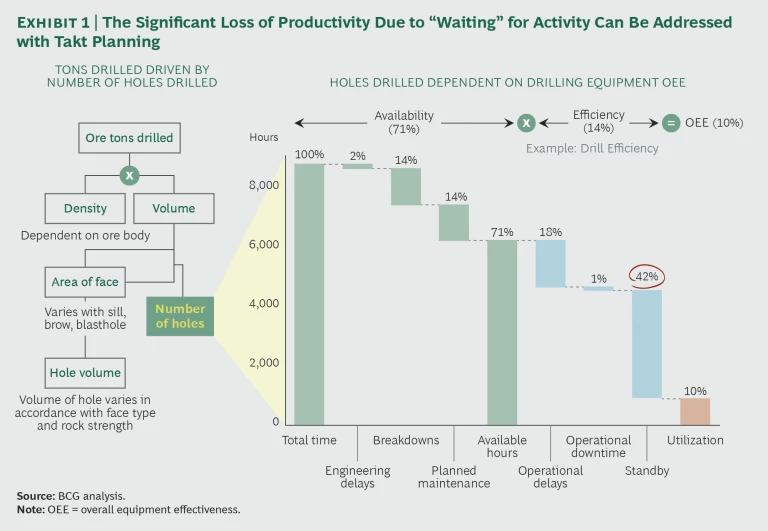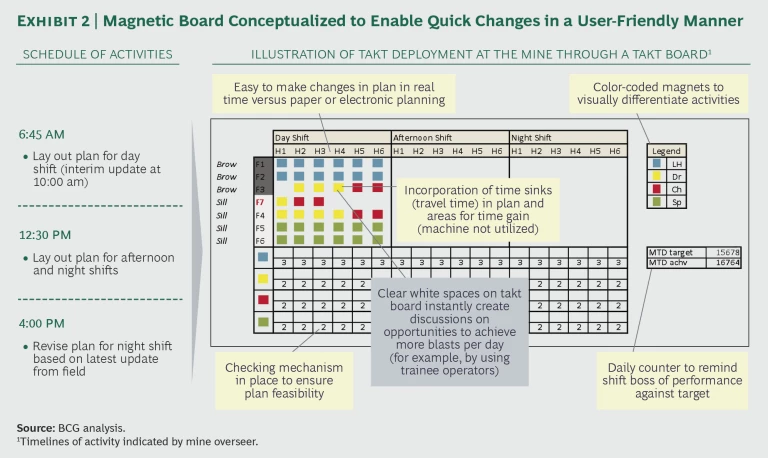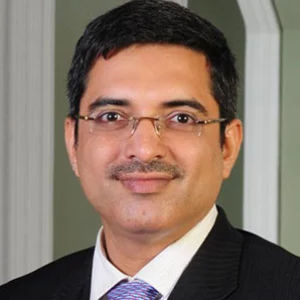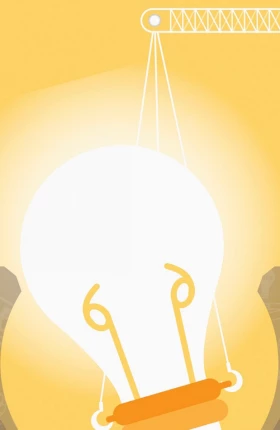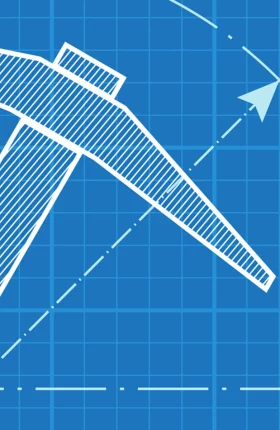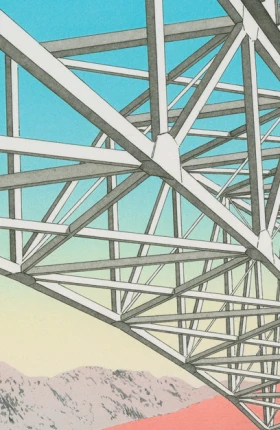Lean principles and practices have been in vogue for decades, revolutionizing productivity in a number of industries, notably automotive. So it’s not surprising that many mining companies have tried to launch lean initiatives. Yet many lean programs in mining deliver incremental improvements for only a few months, after which things return to “normal.”
The mining industry has unique characteristics that make applying lean particularly challenging, such as diverse and difficult working conditions, unpredictable distances, and remote locations.
We have run more than 100 lean programs with mines over the last few decades, across the Americas, Australia, Asia-Pacific, Africa, and Europe. In our experience, miners that get the most value from lean excel on three fronts:
- Understanding and isolating the root causes of poor productivity
- Prioritizing and simplifying lean applications so that all rockface workers understand what it takes to improve productivity
- Relentlessly busting departmental silos to improve collaboration
Why Takt?
One common lean method that brings the above three imperatives together is takt-based production planning.
First, in mining, as in assembly lines, a specific sequence of activities must be carried out for production at each rockface or stope—from drilling and blasting to hauling, crushing, and hoisting.
Second, the time taken for mining activities can be broken down into standard time slots, irrespective of geology and operating conditions; we realized this when we analyzed the geologies of mines across Africa, Asia, and Europe.
Third, coordination of resources across stopes accounts for significant lost productivity in mines. That’s because conditions differ at each site. For example, at an African polymetallic mining client, coordination delays accounted for more than 40% of lost productivity. (See Exhibit 1.) Takt planning helps to better sequence activities, thus reducing delays.
When applied correctly, takt planning can boost mine productivity by 15% to 20%, and keep it there. For example, in an Indian zinc mine we worked with, we helped unlock 15% to 30% more blasts per day by making intrashift gaps between mining activities more visible to production planners.
Golden Rules
How can you best use takt planning to boost productivity at the rockface? Drawing on our work with various mines, we have identified six golden rules, in three categories, for making productivity improvements stick:
- Understand and customize:
- For each mining activity, define a practical takt. We have used takts ranging from 30 to 90 minutes for different clients, using detailed time and motion studies.
- Use real operating times instead of stated shift times for planning. For example, in an African lead mine, time spent in safety instructions, travel, and minibreaks often reduced effective shift times by more than 1.5 hours.
- Simplify:
- Identify the precise target status at the end of each takt. For example, in drilling for a cut-and-fill operation, we used markers to define the target number of holes per takt. This not only set the standard but also made measurement simpler for the shop floor.
- Make linkages clear. For example, we created a magnetic takt board to simplify the creation and changing of sequences, which helped every operator understand key activities and linkages. (See Exhibit 2.)
- Bust silos relentlessly:
- Identify gaps in activity and fill them. For example, at an underground zinc mine, we used visual media to identify white spaces in activity. We saw that drilling half a rockface before the end of a shift allowed for better sequencing and 15% more blasts per day.
- Track actual activity times across departments against takt-planned times, and modify plans as required to improve actual times. Ensure that planning, operations, and engineering are all committed to a common sequence while doing so.
Avoiding Common Pitfalls
As you apply the golden rules, beware of common pitfalls that can cause them to backfire. These include skepticism from shop floor workers and planners, difficulty in optimizing shifts because of variability in operating conditions, and isolation of takt planning to just one department. The following tips can help you avoid these pitfalls.
Assign a master planner. Designate a master planner to collect relevant information for planning, to craft plans, and to communicate them to production managers and workers at each stope. As needed, help your senior mine planner make the transition from the traditional shift-based planning mindset to a takt-based microplanning mindset. For example, in one mine, we won over the planner by explaining how takt planning helped increase the number of blasts per day.
Use clear, compelling visual aids. Resist any temptation to use overly sophisticated visual aids (such as electronic boards) to depict takt plans and actual production activity for workers and managers. We found that one simple but engaging board, using colored magnets, galvanized shop floor workers more than many fancy production status boards.
Involve the shop floor. To win further buy-in for takt planning, involve workers, from both engineering and operations. While such “silo busting” may initially strike workers as strange, they’ll likely grow more comfortable with it if you set up regular cross-functional meetings about takt plans.
This article was first published in Mining Journal on July 24, 2015.
Miners can supercharge productivity at the rockface by implementing takt-based production planning. What’s more, success on this front can form the bedrock for deployment of a larger lean program. However, to capture these benefits, miners will need to avoid all-too-common pitfalls—as well as unite people from different functions behind the effort.
